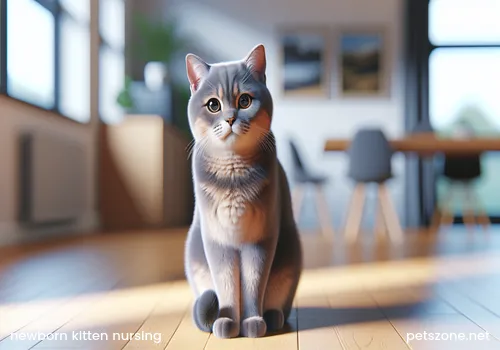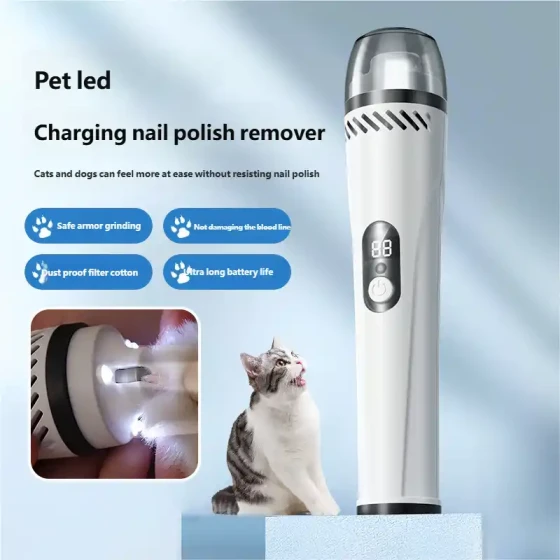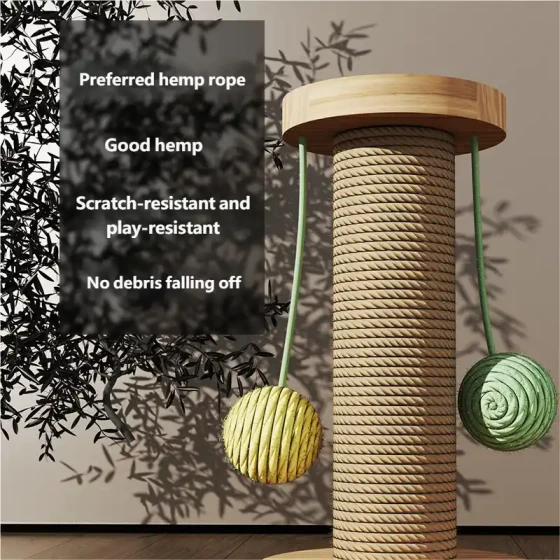What to Do If a Kitten Won't Nurse_Emergency Guide for Newborn Kitten Refusal to Eat
Newborn kittens refusing to nurse is an emergency situation that many new “pet parents” find overwhelming. Facing the potential danger to such a tiny life, we must first remain calm. Usually, the primary reason newborn kittens refuse to eat is low body temperature or the need for stimulation to eliminate. Please immediately check the kitten’s temperature and try to warm it gently, stimulate urination and defecation, then attempt to feed with specialized kitten formula. If these preliminary measures fail or the kitten shows other abnormal symptoms, be sure to seek professional veterinary help promptly.

Newborn kittens have just come into this world, and their bodily functions are not yet fully developed, just like newborn babies, delicate and fragile. Their ability to adapt to the environment is poor, and their resistance to diseases is extremely limited. Therefore, refusal to eat may indicate potential health problems requiring timely and scientific intervention to help them through the crucial initial weeks of life.
1. Kitten Not Nursing? Don’t Panic! First, Feel Its Little Belly and Paws
When you find the kitten not nursing, the first step is not to force feed but to carefully observe and gently touch its little body like a detective. Often behind refusal to eat lie physiological issues that we tend to overlook but are very important.
A. Body Temperature Is Key! Hypothermia Is the "Culprit" Behind Refusal to Eat
Newborn kittens have very weak temperature regulation and can easily suffer hypothermia due to environmental temperature. Just like humans have cold hands and feet in cold weather, kittens with hypothermia experience digestive system "shutdown," reduced intestinal peristalsis, or even cessation, naturally losing their appetite to nurse.
- What is normal body temperature? Normal body temperature for newborn kittens is about 35℃-37℃ during the first week after birth, gradually rising to 37.5℃-38.5℃ afterward.
- How to detect hypothermia? Gently touch the kitten’s ears, paws, and oral cavity; if they feel cold or the belly feels cool, it’s likely hypothermia. Signs include trembling, lethargy, weak or no crying.
- How to help warm the kitten?
- Warm water bag or electric heating pad: Place a warm water bag wrapped in a towel (water temperature about 50-60℃ to avoid burns) in the kitten’s bed, or use a pet-specific electric heating pad (control temperature carefully). Allow the kitten to choose to be near or away from the heat source.
- Hand warmer/hot water bottle: Wrap a hand warmer or hot water bottle filled with hot water in a towel and place it near the kitten.
- Body warming: Hold the kitten close, using your body heat to warm it, or wrap it with a towel to reduce heat loss.
- Gradual warming: Warm slowly, increasing 1℃-2℃ per hour to avoid shock. When the kitten’s temperature returns to normal (feels warm, pink paws) and its spirit improves, try feeding again.
B. Stimulate Elimination; Clear Bowels for Good Appetite
After birth, mother cats constantly lick their kittens’ abdomen and anal area to stimulate elimination. If the kitten has lost this care, we must do this manually. This is not only for cleanliness but also to stimulate intestinal peristalsis and promote digestion and absorption. Long-term non-elimination can cause discomfort, leading to refusal to eat.
- How to stimulate elimination? Prepare a warm, damp cotton ball or soft cloth and gently wipe the kitten’s abdomen and anal area before and after feeding, mimicking the mother's licking until they urinate or defecate. This takes several minutes and requires patience.
- Importance: Regular stimulation keeps the bowels clear, prevents constipation and bloating, providing a comfortable digestive environment to improve appetite.
2. Prepare “Food”: Specialized Kitten Formula Is the First Choice
After solving temperature and elimination issues comes the preparation of their “food.” Selecting an appropriate formula is vital for newborn kittens’ health and growth.
A. Formula Choice: Never Use Cow’s Milk!
Many new “pet parents” may think cow’s milk is milk, so kittens can drink it. This is a big mistake! Cow’s milk for humans is “poison” for kittens! Cow’s milk contains high lactose, and kittens lack the enzyme lactase to digest it, causing severe lactose intolerance, diarrhea, dehydration, and even life-threatening conditions.
- Must choose kitten-specific formula: There are formulas specially made for kittens on the market, mimicking mother cat’s milk nutrition, rich in protein, fat, vitamins, minerals, and low in lactose, very suitable for kittens’ digestion.
- Brand selection: Many well-known pet brands at home and abroad offer kitten formula, such as Royal Canin, KMR, PetAg, etc. Purchase through official channels and read product instructions carefully.
B. Preparation Tips: Temperature and Concentration Matter
Preparing formula is like preparing baby milk powder; attention to detail is needed to ensure the kitten drinks comfortably and healthily.
- Water Temperature: Use warm water about 40℃-50℃ to mix the formula. Test with the inside of your wrist — it should feel warm but not hot, similar to water temperature used for infant formula. Too hot damages nutrients; too cold affects digestion.
- Mixing Ratio: Follow the instructions on the formula package strictly without arbitrarily changing water volume. Too dilute results in insufficient nutrients; too concentrated burdens the kitten’s digestion.
- Feeding Tools: Preferably use kitten-specific bottles with small nipples, or syringes with measurement scales (needles removed) for feeding.
- Feeding Frequency and Amount: Newborn kittens need feeding every 2-3 hours including nighttime. Feeding volumes depend on kitten weight and age, with detailed guides usually printed on formula packaging. Feed small amounts multiple times to prevent choking.
3. Feeding Position: Make the Kitten Comfortable While Nursing
The correct feeding position effectively avoids choking and ensures kittens safely and smoothly drink their milk.
A. Mimic Nature: Prone Position Is Best
- Avoid lying on the back: Never let kittens feed lying on their backs, as milk easily enters the airway causing choking, coughing, or even pneumonia.
- Prone position: Position the kitten belly-down with the head slightly raised, just like nursing beside their mother, letting them suck the nipple naturally.
- Angle: Hold the bottle or syringe at a slight angle ensuring the nipple is full of milk to reduce swallowed air.
B. Speed and Rhythm: Small Amounts, Patience Is Key
- Observe swallowing: Watch the kitten’s swallowing carefully to ensure active sucking and swallowing, not passive pouring.
- Burp: After feeding, hold the kitten upright like a baby and gently pat its back to help release air from the stomach, preventing bloating discomfort.
4. In-depth Analysis: Deeper Causes of Newborn Kitten Refusal to Eat
Besides low body temperature and need for elimination stimulation, refusal can signal more complex problems.
A. Congenital Weakness or Disease
- Premature or low birth weight: These kittens are born weak and may lack sufficient sucking strength or ability.
- Congenital defects: Such as cleft lip, cleft palate, or other oral structure abnormalities that directly affect sucking and swallowing.
- Infections: Newborns have low immunity and are susceptible to bacterial or viral infections (like feline panleukopenia, respiratory infections), leading to lethargy, fever, diarrhea, and refusal to eat.
B. Maternal Issues
- No milk or mastitis in mother cat: The mother’s health problems might prevent normal milk production or cause mastitis that spoils milk, depriving kittens of nutrition.
- Mother cat refusing to feed: In rare cases due to inexperience, stress, or weak kittens, the mother may reject feeding.
C. Environmental Stress
- Sudden temperature change: Beyond hypothermia, drastic environmental temperature changes cause discomfort and stress.
- Noise or frequent disturbances: Kittens need quiet, stable surroundings. Noisy or frequent handling causes anxiety and reduces appetite.
5. When to Seek Help? Professional Veterinarians Are Your "Reassurance"
Though you can try the above measures initially, some situations require prompt veterinary assistance.
- Persistent refusal: If the kitten continues to refuse feeding after all interventions for more than 4-6 hours or no improvement after 24 hours.
- With other symptoms: Refusal combined with extreme lethargy, persistent diarrhea (especially bloody stools), vomiting, difficulty breathing, seizures, trembling, persistent high fever or very low body temperature.
- Unmanageable at home: If uncertain about the kitten’s condition, or all home care methods fail, immediately take the kitten to a vet. The vet will conduct a full examination, identify the underlying cause, and offer professional treatment such as fluid nutrition, medications for infection, etc.
6. Frequently Asked Questions
Q: How long can a kitten go without nursing before starving to death?
A: Newborn kittens have very limited body reserves. Without nursing, they can develop severe dehydration and hypoglycemia within 12-24 hours, which can be life-threatening. Especially in the first days, they need to feed every 2-3 hours. Immediate intervention is essential upon refusal.
Q: Why does a kitten keep crying but not nurse?
A: Persistent crying may indicate discomfort or need. If the kitten cries without nursing, it may be unwell due to hypothermia, bloated belly, hunger but inability to suck, or illness. Check all above causes carefully.
Q: Can glucose water be given to kittens?
A: In emergencies, if the kitten is hypoglycemic (weak, sleepy, seizures) and no kitten formula is available, small amounts of diluted glucose water can temporarily provide energy. However, glucose water cannot replace formula or be a long-term food, as it lacks other nutrients essential for growth. Also, concentrated glucose water burdens kidneys and may cause osmotic diarrhea; use under veterinary guidance.
Q: How to tell if a kitten is full?
A: Signs of fullness include:
1. Sucking gradually slows and stops.
2. The belly appears slightly rounded, soft but not hard.
3. The kitten becomes quiet, starts licking its mouth, then falls asleep.
4. Weight gradually increases (about 10-15 grams per day).
Summary: Love and Patience Are the Best “Nutrients” for Kitten Growth
Refusal to nurse in newborn kittens is an alarm signaling possible health issues. As temporary “cat moms” or “cat dads,” our love, patience, and scientific care methods are key to helping them through difficulties. From checking temperature and stimulating elimination to preparing proper food and mastering feeding techniques, every step counts.
Remember, careful observation, decisive action, and seeking professional veterinary help when necessary are the best guarantees for these little lives to grow healthy and happy. May every kitten grow up healthy and joyful in a loving environment!
References:
* Kitten Care Guide released by Cornell Feline Health Center.
* Kitten Feeding and Care Advice provided by the American Society for the Prevention of Cruelty to Animals (ASPCA).
* Kitten First Aid and Care Information published by the Royal Society for the Prevention of Cruelty to Animals (RSPCA).
* Chapters on neonatal care in professional veterinary medicine texts such as "Small Animal Clinical Manual."



